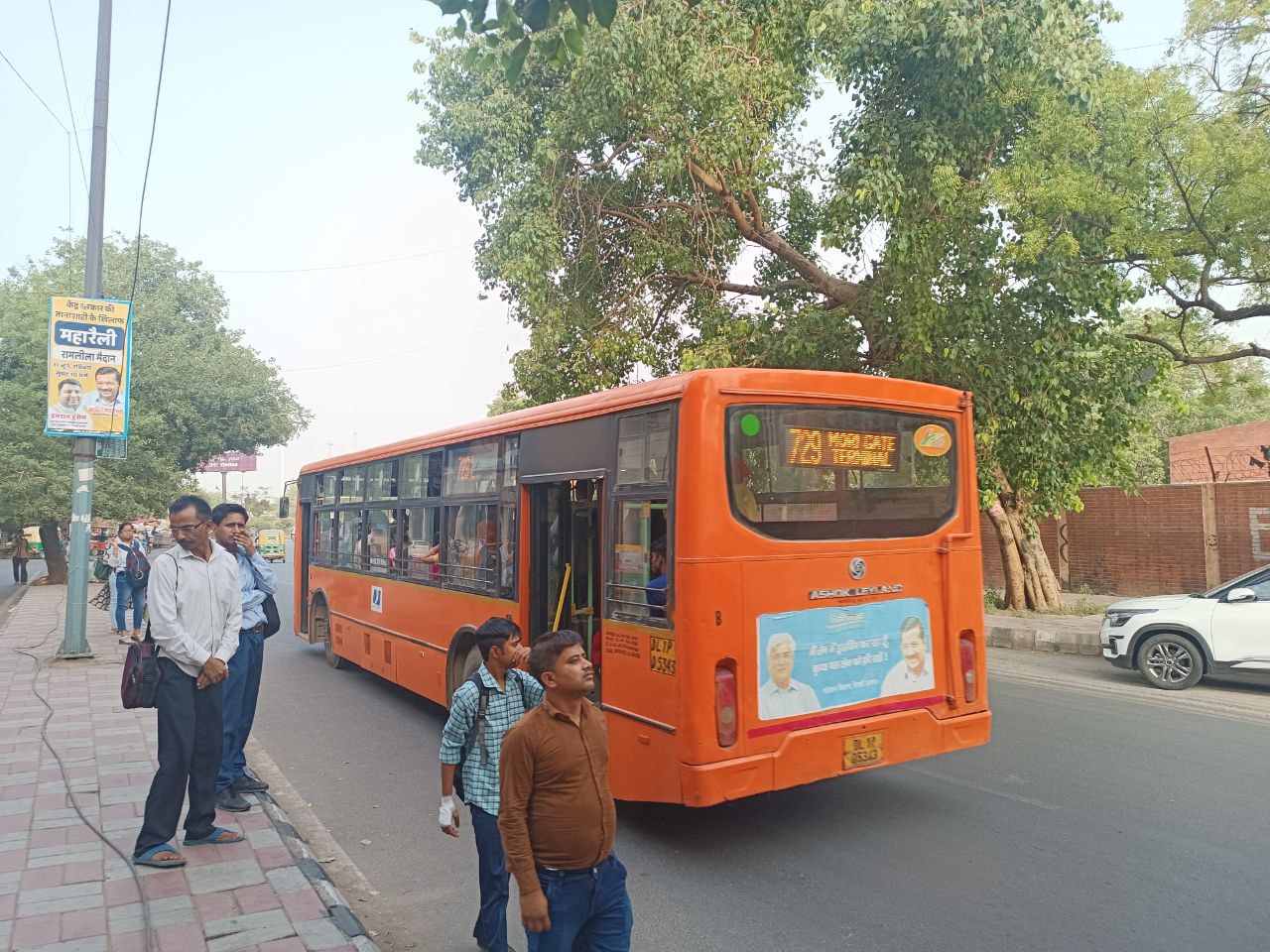
LONG HAUL: The bus number 729 follows the longest route between two different destinations in Delhi. Photo Tej Pratap Bhardwaj
Despite the blazing hot sun, life looks normal as scores of people are out at Mori Gate.
There is a buzz in the air. As you cross the dingy streets to reach Mori Gate Bus Terminal, you take a pause and think of the playwright and author Saadat Hasan Manto.
But why him?
Because he lived here at Mori Gate with his family while working for the drama division of the All India Radio (AIR) in Delhi from 1940 to 1942. Manto wrote a total of 110 plays for the AIR.
During his days in Delhi, Manto used to spend time with Krishan Chander, his colleague who also went on to be celebrated as an Urdu writer. Chander stayed with his family at Bhargava Lane near Tees Hazari.
As you reach the Bus Terminal and wait for bus number 729 for your journey to Kapashera, the last post in south Delhi before Gurugram, you continue to think of Manto and his days in Delhi. Within a couple of minutes, your bus arrives.
You enter the bus along with other passengers to embark on what is the longest DTC (Delhi Transport Corporation) bus route. It takes around two hours to reach Kapashera. In the course of the journey, it stops at 25 bus stands, besides halting at traffic signals 15 times.
After his punishing journey from Kapashera to Mori Gate, the poor driver talks to the conductor and some other people while splashing cold water on his face.
While you watch him prepare for the ride back, Manto’s classic short stories, such as Toba Tek Singh, Thanda Gosht, and Kaali Shalwaar come to mind. You tend to think of Delhi and Mori Gate of the 1940s as well as the life of Manto.
While in Delhi, he wrote the story of Banjara for Seth Jagat Narain, the owner of cinema halls such as Jagat, Ritz and Novelty, all of which survive only in memory.
And now the bus is ready for its return journey. The driver is on his seat and starts the bus, which moves towards Kashmiri Gate, GPO and Red Fort. When it reaches the crowded Red Fort, you think of the moving tribute that Krishan Chander paid his dear friend after his death in 1955 in Pakistan.
“I met Manto for the first time in Delhi. Alas, the day he left for his heavenly abode, I was again in Delhi. I am at the same house in Delhi where he spent 15 days with me 14 years ago. What a coincidence that currently some picture halls in Delhi are screening Mirza Ghalib. He wrote the story of Mirza Ghalib in Delhi’s Mori Gate,” Chander said in his obituary.
It would perhaps not be wrong to presume that Manto visited Mirza Ghalib’s house at Ballimaran and his final resting place in Nizamuddin several times while writing the script of ‘Mirza Ghalib’.
As bus no. 729 enters Daryaganj, it gets packed with passengers, comprising mostly the working class. Some patients also board it as the bus moves past the LNJP hospital and later the RML hospital.
At Minto Road, some transpersons too step inside. They are debating with the conductor over the ticket. The passengers listen to their conversation with great attention. The transpersons get down at Sardar Patel Marg without ever having bought the tickets. We have been on the bus for nearly 75 minutes. The AC gave up on its fight against the heat long ago. Our destination is still a long way away.
Getting restless, you meekly ask the conductor how much more time would it take to reach Kapashera.
With an attitude bordering contempt, he replies, “Baithe raho ji. Abhi time lagega (Sit tight. It will take some time).”
You left Manto’s Mori Gate behind long ago. Having already seen Old Delhi, you are cruising through New Delhi and will soon get to see parts of rural Delhi.
Meanwhile, those who still have not got seats are cursing their luck.
Some young girls and women are also seated on the bus. They take red slips, or free tickets, from the conductor. Women in Delhi are allowed free bus travel.
You have already crossed Dhaula Kuan, where our bus was stuck in a jam for a few minutes, and Subroto Park.
At the Rangpuri bus stand, the conductor says that after crossing Mahipalpur, it will take us 10-15 minutes to reach Kapashera unless we run into a traffic snarl. His words come as a huge relief. You can see flights take off and land as the bus nears the busy IGI airport. You realise that this bus journey is taking more time than it would take for you to reach Mumbai.
As our bus moves into a narrow lane, you feel you’re close to Kapashera upon seeing tractors jostling for space with sleek cars and buses carrying youngsters going to the famous water park ‘Fun N Food Village’.
At last, we reach our destination in almost two hours.
On a parting note, the conductor says: “Do you know Oberoi Hotel chairman Oberoi saheb also lives in Kapashera?”
And with these words, curtains finally come down on this eventful cross-Capital journey.
After past differences, Karan Johar and Kartik Aaryan finally collaborate on Tu Meri Main Tera…
Delhi Fire Service has initiated comprehensive fire safety inspection drive in restaurants, hotels and clubs…
Out of 40 air quality monitoring stations across the city, 14 recorded severe air quality…
Govt, however, acknowledged that air pollution is one of the triggering factors for respiratory ailments…
Rising air pollution levels in the capital, the Delhi government on Thursday undertook a comprehensive…
Parents say online classes during severe air pollution ignore the digital realities of economically weaker…